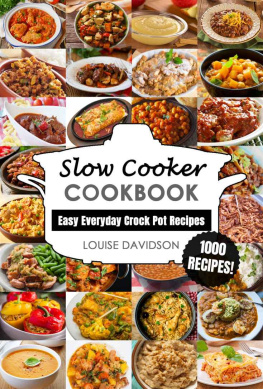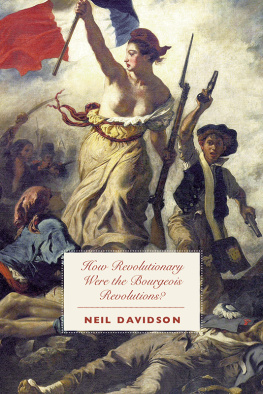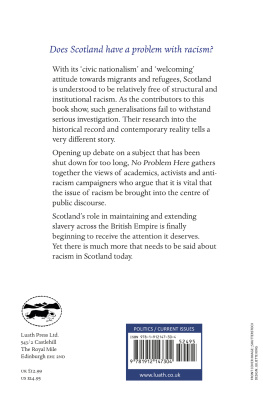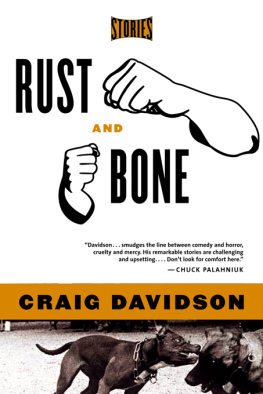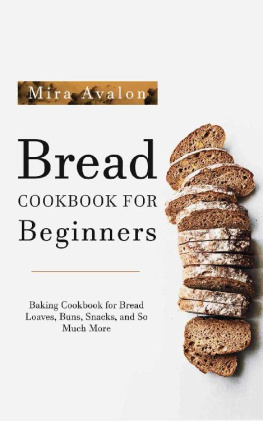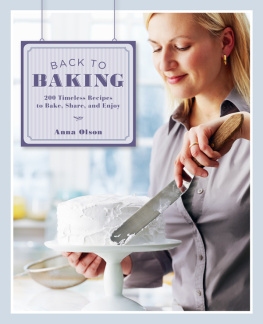All rights reserved 2022 by Louise Davidson and The Cookbook Publisher. No part of this publication or the information in it may be quoted from or reproduced in any form by means such as printing, scanning, photocopying, or otherwise without prior written permission of the copyright holder.
To thank you for downloading my book, for a limited time, you can get these two FREE COOKBOOKS from the Cookbook Publisher.
MAKING VINTAGE PIE
Theres nothing like the scent of freshly baked pie in the kitchen, but the days when baking a homemade pie signaled a special occasion are gone. Many of us look back on that tradition with fondness, remembering those pies as the number one comfort food. Those were the days when mom or grandma had painstakingly prepared a special pie packed with love and deliciousness.
Its easy to get a piece of the pie nowadays. You can get it pre-baked from your convenience store, or at your local pastry shop or caf. There are pre-made fillings and crusts. Its never been this easy.
But those who have baked pies from scratch know the rewarding joy that comes with making one. Some say there is something almost spiritual about baking pies. Every bite of homemade pie seems to impart the makers love and devotion. This is perhaps why old-fashioned, home-baked pies come with so many warm, fuzzy feelings and memories.
Baking old-fashioned pies may be becoming a lost art. This is such a pity, as these traditional pies are packed, not only with luscious flavors but with history and a testament to the persistence and optimism of the pie-makers our mothers and grandmothers during times of difficulty. Indeed, recession and war gave birth to such amazing vintage pies as Mock Apple Pie, Vinegar Pie, and Sugar Pie. To forget these pies, which are so much a part of our history, would be a loss to our culture and heritage.
This cookbook will bring you back to those times when pies were made out of devotion and persistence, proving our love for family and good things, our creativity, and our victory over hardship and limitation.
A Bit of History
Ancient Egypt and Greece are where pies first appeared. The ancient Greeks consumed pie (artocreas), but it was savory and had meat inside an exposed pastry crust. It's possible that the first people to create a pie with a top and bottom crust were the Romans. One of the earliest records of a closed pie is the placenta (flat cake) recipe from Marcus Porcius Cato (Cato the Elder)'s Agri Cultura from the second century (BCE). According to several interpretations, it was made by enclosing a sweet, dense filling of goat cheese, honey, and layers of pastry dough (tracta) with a bottom and top crust.
The people of 16th-century England are frequently credited with the rise in popularity of the sweet fruit pie or tart. Cherry pie was a favorite food of Elizabeth I, and there are fruit pie recipes in the Newe Booke of Cokerye (1575) A number of recipes for fruit and meat crostate (pie/tarts) are also included in Bartolomeo Scappi's Opera (1570).
Royalty and the higher class would commission their chefs to create gorgeous pies using living animals in order to dazzle guests. A later example of a recipe that contained both live birds and frogs is the Accomplish Cook's (1671) Live Birds in a Pie recipe.
By the 17th century, sweet pies and tarts had become more common. The 1694 book The Compleat Cook: or, the Whole Art of Cookery has a chapter on "Tarts of all lozts." The Whole Body of Cookery , dissected by William Rabisha, also has a chapter on "All manners of tarts" in it.
Colonial America was a typical place to make pies. As the nation expanded, more sweeteners like maple syrup, cane sugar, molasses, and honey became available (the Dutch and English imported honeybees to the U.S.). Early colonists made pumpkin, apple, pear, quince, and blueberry pies. Amelia Simmon's American Cookery (1796), the country's first cookbook, has a recipe for "Pumpkin Pudding" baked in a crust. This is one of the first recipes for the popular pumpkin pie in America.
New England earned its reputation as the "pie belt" for a good cause. In New England, pies were a staple food, and it was not unusual to have pie for breakfast. New ingredients and regional specialties arose as the nation moved west.
The Northern states gained popularity for their pumpkin pies, the Midwest for their cream and cheese pies, the Upper Plains for their tart berry pies modeled after Swedish tart berry pies, and the Southwest for their nut pies made from local pecan and walnut trees. Also, the Pennsylvania Dutch were renowned for their shoofly pie, Florida for their key lime pie, Kentucky for their chess pie, and the states south of the Mason-Dixon line for their sweet potato pies.
The pie plant, sometimes known as rhubarb, was in use by the middle of the 19th century. Three pie plant recipes may be found in The Good Cheer Cookbook (Chippewa Falls, Wisconsin, 1899). There are numerous pie recipes in The 76: A Cook Book , published in 1876 and edited by the ladies of Plymouth Church in Des Moines, Iowa. This book has recipes for coconut, cream, custard, lemon, and even vinegar pies.
The health movement caused a decline in pie consumption in the United States during the late 19 th and early 20th centuries. In fact, pie received criticism. The essays "Why I have no cakes and pies on my table" (1905) and "Why I oppose pies" by Sarah Tyson Rorer were published in Ladies Home Journal (1900). In these writings, Mrs. Rorer claimed that "pies and cakes are indigestible" and that "the inside of a pie is deleterious."
Instant pudding mixes, canned fruit, and frozen and ready pie crusts had made making pies simpler by the middle of the 20th century. The popularity of chilled pie dishes like Black Bottom Pie increased as home refrigerators became more widespread. Pie recipes from the quickly growing food industry contained ingredients like Coca-Cola, Oreos, potato chips, and Ritz crackers. Today, we are rediscovering our pie-making roots and going back to the basics. Many of us are searching for vintage family recipes so we may recreate Grandma's pie.
Tips for Making the Perfect Pie
Unlike our grandmothers, we now have the advantage of the technology at our disposal. You have the choice to make pies the old-fashioned way or to use modern equipment. Following these basic tips will help you create tasty pies with great crusts every time!
Use fresh ingredients in the right proportions
Start with fresh, good-quality ingredients to ensure your pie will taste great. The usual proportion is 1:1 for flour to butter and about 1:2 for water to flour by weight. Another well-known conventional proportion of ingredients is 3-2-1: 3 parts flour, 2 parts fat, and 1 part water by weight. Too little butter will cause the dough to break easily and be difficult to handle. In warm climates, butter may be difficult to handle, so shortening may be used, although the resulting crust will not be as tasty. A heaping teaspoon of baking powder to 4 cups of flour can be a big help for the beginning pie maker to achieve a flaky crust.


